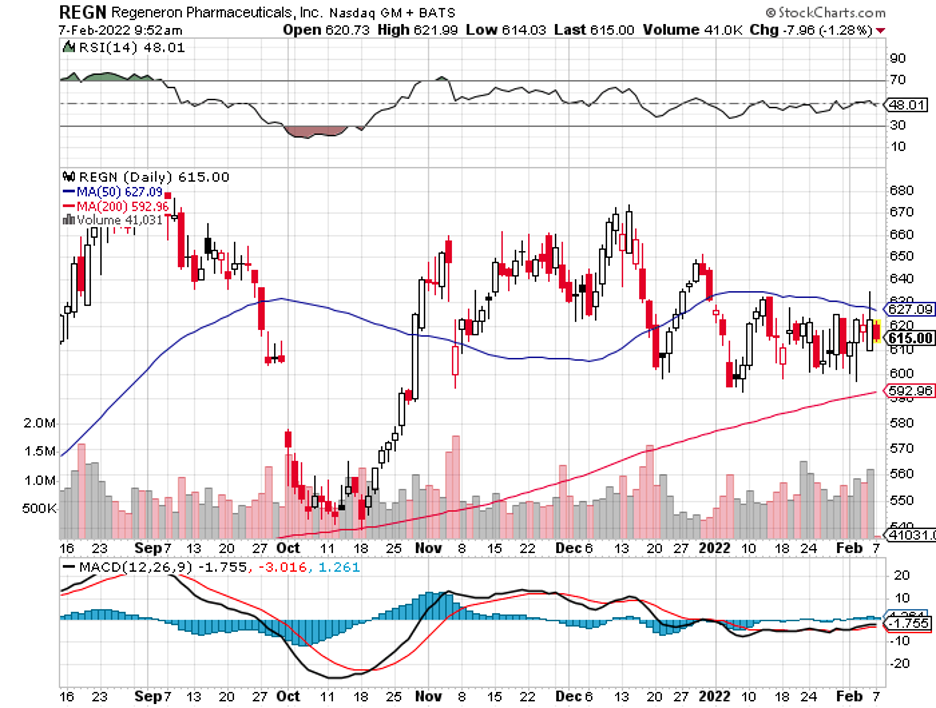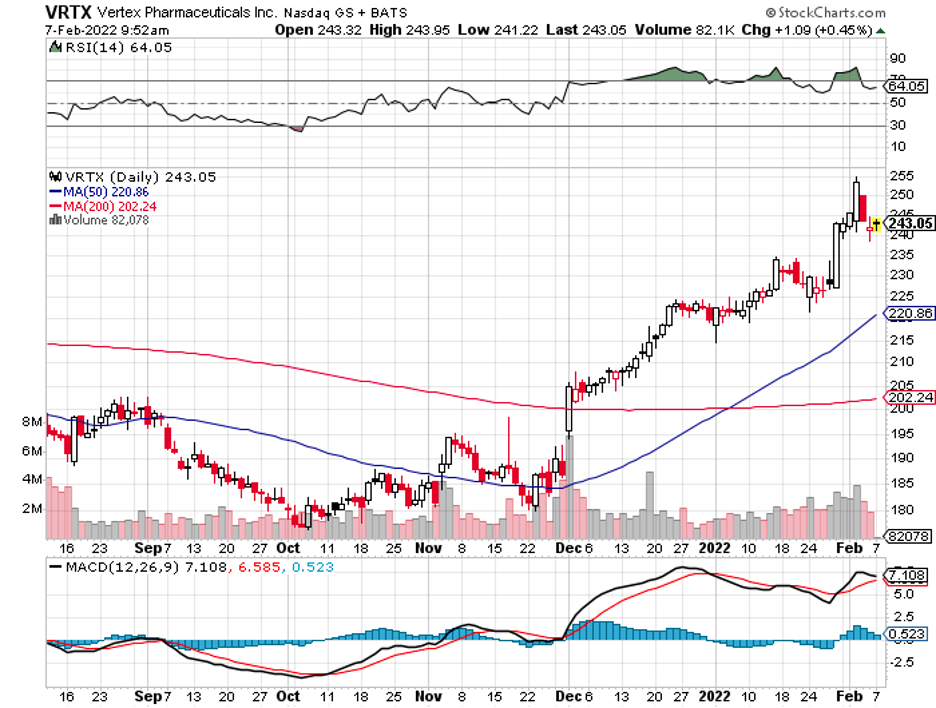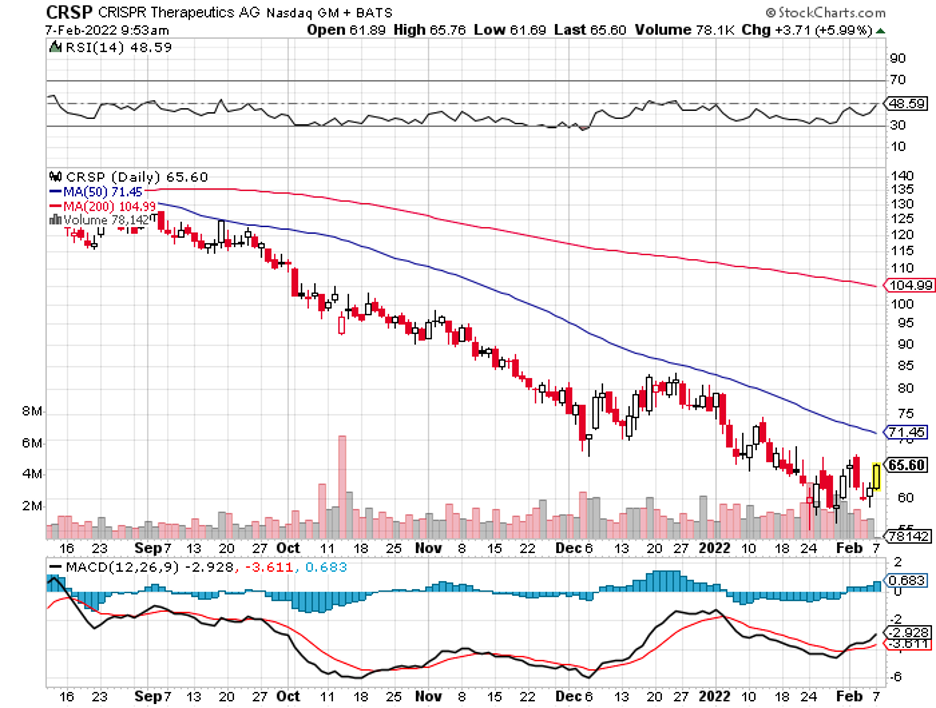The gene-editing sector quietly achieved historical results in 2021. Last year, human trials of two in vivo CRISPR-centered treatments released promising data.
One study, conducted by Intellia Therapeutics (NTLA) and Regeneron Pharmaceuticals (REGN), worked on targeting the faulty gene responsible for transthyretin amyloidosis.
Using their new CRISPR-based therapy, they were able to record an impressive 96% decline in the transthyretin gene.
This is an impressive accomplishment not only for its high efficacy but also for the mere fact that no other work has managed to record any significant effect on the gene for almost a decade now.
The other study is by Vertex Pharmaceuticals (VRTX) and CRISPR Therapeutics (CRSP). Over the years, the two have been collaborating on coming up with treatments for various rare diseases.
In 2021, they recorded promising results in their clinical trials for sickle cell disease and beta-thalassemia. Aside from the potency of these treatments, there is a possibility that the effects would offer long-lasting improvements in the patients' lives.
While 2021 was clearly a remarkable year for the gene-editing sector, all signs indicate an even better 2022.
If the sector doesn’t deliver, there will be 2023 and the year after. After all, the gene-editing world is the kind of space that gets better with age.
More than that, this sector will keep evolving and attracting new players every year.
Hence, key players like Thermo Fisher Scientific (TMO), Sangamo Therapeutics (SGMO), Editas Medicine (EDIT), Merck (MRK), and Oxford Genetics cannot expect to be the top names in the industry forever.
Recently, some names have been making waves in the gene-editing industry.
One is Excision BioTherapeutics. Founded in 2015, this Philadelphia biotechnology company leverages its CRISPR-based platform to target viral infections.
Basically, they aim to snip the viral DNA out of the host genome.
To date, the company’s most advanced project is its HIV treatment: EBT-101. So far, Excision has managed to functionally cure its test animals of the infection by removing their HIV genomes.
Ultimately, Excision’s goal is to come up with a “one-and-done” therapy for viral diseases.
Apart from working on HIV treatments, the company is also looking into potential cures for herpes simplex, hepatitis B, and a rare brain infection called multifocal leukoencephalopathy.
If these treatments succeed, Excision’s therapies would be available in highly specialized treatment centers.
Another promising biotechnology company is California’s Scribe Therapeutics, which was founded in 2018.
Describing their approach to be guided with an “engineer first” philosophy, Scribe’s plans to use CRISPR-based gene-editing tools to achieve their goals.
Instead of using the conventional CRISPR-Cas9 methods, the company opts for modified versions of the RNA-guided genome editors or CasX enzymes.
Scribe has been developing these CasX enzymes to ensure that they acquire the qualities of the target for enhanced specificity.
That is, the company wants its “editor” to learn as much as possible about the characteristics of the system to deliver intentionally designed solutions.
Simply, Scribe aims to control all elements and eliminate the need to leave anything to chance or even nature.
Since its founding, Scribe has been actively developing solutions for unmet medical needs.
For instance, it has been working with Biogen (BIIB) to develop and eventually market CRISPR-based treatments that target an underlying genetic component of a nervous system disease called amyotrophic lateral sclerosis.
The agreement states that Scribe will get $15 million upfront and receive over $400 million in potential milestone payments.
The company has already started testing its technology in mouse models, focusing on neurological and neurodegenerative conditions.
Given their current trajectory, Scribe expects to release data by the third or fourth quarter of 2022 or early 2023.
All in all, gene-editing tools have evolved so much from the mid-twentieth century. Back in the 1970s and 1980s, the process of gene targeting was only possible in experiments on mice.
Since then, the ever-expanding world of science has pushed the sectors of gene analysis and manipulations to cover all kinds of cells and organisms.
Considering the increasing demand in this sector, it’s no wonder the gene-editing world has been growing at breakneck speed over the past years—a pace that won’t slow down anytime soon.




